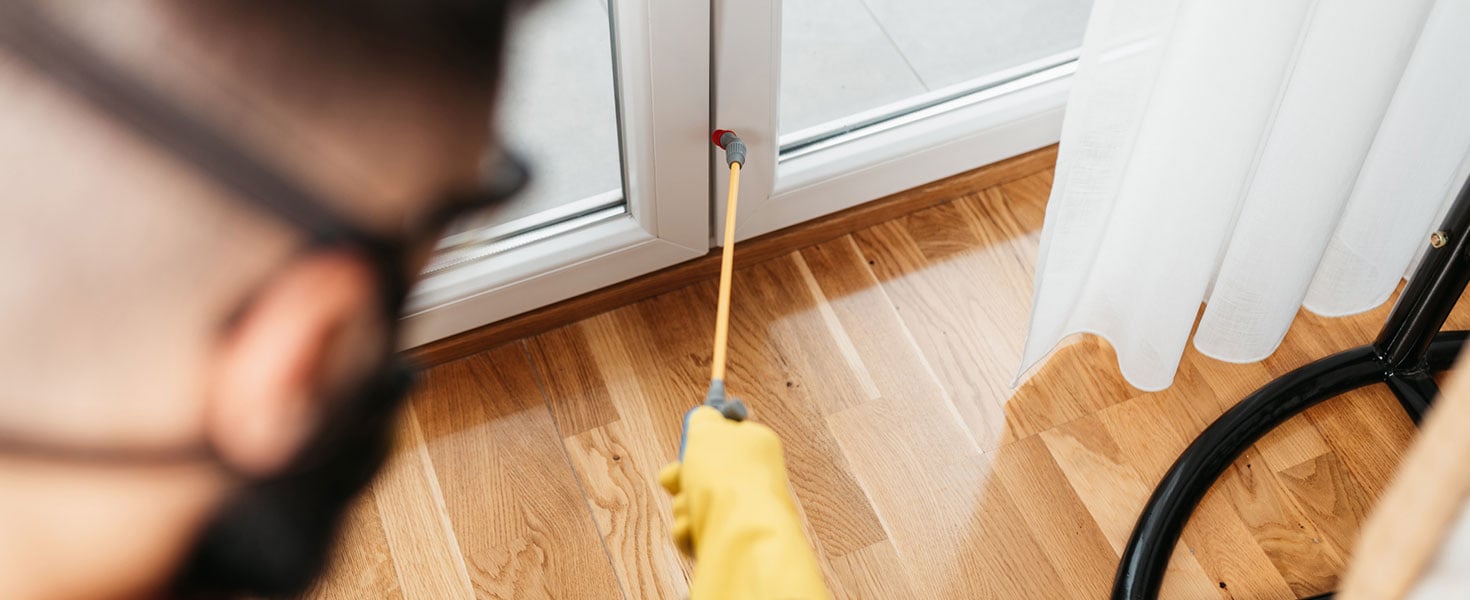

Termites, silverfish, cockroaches, and other household critters are more than a nuisance. Many carry diseases, while others—such as termites and carpenter ants—can cause significant damage.
Because many insects and rodents want to escape the cold, you're likely to spot them in your house. Hollow wood or a musty odor can be telltale signs that they've settled in.
“Look through the many facetted eyes of a bug and try to see the opportunities that they may see for both entering your home and finding food and water,” says entomologist Bob Gilbert with Blue Sky Pest Control In Gilbert, Arizona.
Here are eight ways to keep those unwanted bugs from moving in.

TOUR THE YARD
Most pests enter from the outside, says Gilbert. “Take the time to walk through your entire yard with a critical eye,” he says. Check for the following:
- leaf piles under shrubbery and bushes, which attract crickets, earwigs, or scorpions
- animal waste, which is a home for fly eggs
- pools of water, which are havens for mosquitos and water bugs
- firewood near the house, which is a welcome refuge for spiders, rodents, ants, scorpions
Weed, clean up debris and pet waste, and remove anything that can harbor these critters, such as buckets, tarps or building materials, he says. Trim plants near the foundation and cut back branches that hang over the house.
“By eliminating the sources of food, water, or harborage, you will help eliminate the pests,” Gilbert says.

INSPECT YOUR HOME’S EXTERIOR
Now, turn your attention to how creepy crawlies can get inside. “This isn’t always an easy question to answer,” Gilbert acknowledges.
Check to see if any light is visible around the door edges at night. If so, bugs can slip through the gaps, he says. Weather stripping is a good fix. Also, make sure the screens are in good repair.
During the day, check the foundation for cracks and crevices. “A good majority of the time, pests come in through the tiny cracks and crevices found throughout the house, especially by windows and doors,” says Jerry Wang, owner of DIYPestWarehouse. Don’t forget to look for openings near the roofline, he adds.
IDENTIFY THE INSECT
If you see an unknown bug, try Google Lens, suggests Tim McMahan, owner of The Pest RX in Fairview Heights, Illinois, near St. Louis, Missouri.
“As a pest control operator, I use this myself on occasion,” he says. “Google Lens may not give you the exact variation, but it will identify an insect as a beetle, ant, or cockroach.”

KEEP AN EYE ON PETS
Ticks and fleas can catch a ride inside on a furry coat. The pet might scratch and seem agitated. Or you may notice red bumps on the animal’s groin, belly, legs, or tail base. Tiny dark specks are flea “dirt,” which is excrement.
If fleas are present, you must treat the dog as well as the home’s interior and exterior. Options include garden sprays, indoor foggers, and carpet sprays.
AVOID STANDING WATER AND HUMIDITY—INSIDE OR OUT
Like humans, other animals need water, notes McMahan. Fix any water leaks, and don’t leave wet rags, towels, or sponges lying around. He also recommends thoroughly emptying coffee pots and sinks.
Run a dehumidifier in the basement to deter dampness, suggests Zackary DeAngelis, founder of Pest Pointers, which offers tips for pest control. Small insects only need a small amount of water, so wipe your sink, he adds.
REDUCE PILES OF PAPER
Paper and textiles—along with flour and sugar—are a food source for silverfish, a wingless insect that thrives in moist, humid environments. Protect essential papers by keeping them in containers that insects can’t penetrate.

KNOW THE SIGNS OF TERMITE INFESTATION
According to M&M Pest Control in Long Island City, New York, there are five signs that you may have termites:
- Stuck windows or doors, which warp after the termites feed on them
- Tiny pinhole tunnels under paint or wallpaper, which may bubble or grow discolored
- Termite swarms, which means the original colony is ready to expand
- Mud tubes that start on the ground and run toward wood
- Termite droppings, which resemble wood dust or shavings.
If you suspect you have termites, call a professional. Many companies will identify the pests for free, and you will need experts to handle the infestation.
USE THE PROPER CONTROL METHOD
Pest RX has a listing of the most common pests and how to get rid of them. Baits, traps, and sprays are options, depending on the creature, but DIY methods may not work if there is a serious infestation.
Pesticide sprays are often the last step in eliminating a pest problem, McMahan says. But it's important to note that the most pesticides sold at hardware or garden stores eventually stop working. “This is because they are primarily repellents,” he explains. “The pesticide kills some insects, but the others figure it out quickly and avoid the area. When the pesticide wears off, the insects come back.”
A professional can address the problem and implement a maintenance program.
